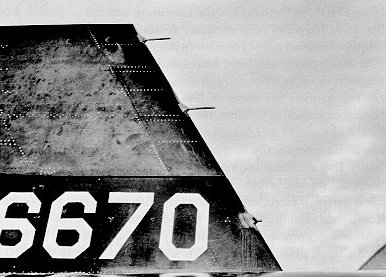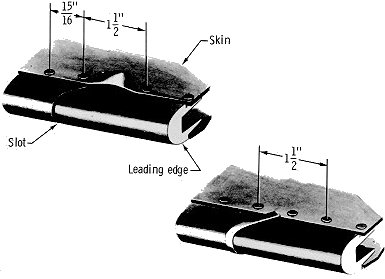
|
| Pressure tubes in the leading edge of the X-15's upper vertical tail measure airflow conditions in the wake of the fuselage. The craft's instrumentation, elaborate despite weight and volume restrictions, measured pressure at 160 locations. |

|
| Pressure tubes in the leading edge of the X-15's upper vertical tail measure airflow conditions in the wake of the fuselage. The craft's instrumentation, elaborate despite weight and volume restrictions, measured pressure at 160 locations. |

|
| Temperature-indicating paint strikingly reveals the uneven heating to which the X-15's heat-sink wing structure was subjected during a high-heating mission. Dark areas indicate the higher temperature. Light areas reveal internal structure. |

|
| Top drawing shows a typical buckle in the wing skin of the X-15, caused by uneven expansion between the leading edge and the area directly behind it in hot airflow at hypersonic speed. Bottom drawing shows how covering the slots with small Inconel tabs and adding a rivet prevented recurrence of the buckling. |

|
| A noteworthy scar of the X-15's first flight to Mach 6 was this cracked outer panel on the right side of the windshield. Investigators found that thermal stresses higher than expected in the metal retainer holding the glass had caused the cracking. |


